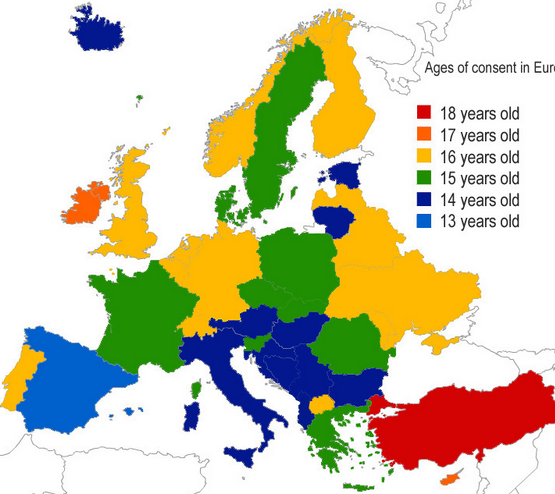Lots of people (including James Bullard) have sent me a new paper by Costas Azariadis, James Bullard, Aarti Singh, and Jacek Suda. Here is the abstract:
We study optimal monetary policy at the zero lower bound. The macroeconomy we study has considerable income inequality which gives rise to a large private sector credit market. Households participating in this market use non-state contingent nominal contracts (NSCNC). A second, small group of households only uses cash and cannot participate in the credit market. The monetary authority supplies currency to cash-using households in a way that changes the price level to provide for optimal risk-sharing in the private credit market and thus to overcome the NSCNC friction. For sufficiently large and persistent negative shocks the zero lower bound on nominal interest rates may threaten to bind. The monetary authority may credibly promise to increase the price level in this situation to maintain a smoothly functioning (complete) credit market. The optimal monetary policy in this model can be broadly viewed as a version of nominal GDP targeting. (emphasis added)
Obviously I like this paper, even though they rely on nominal debt contracts rather than my preferred sticky nominal wages as the key friction.
In their model, when the zero bound threatens to appear, policymakers deviate from standard policy by engineering a rise in the price level. This sounds vaguely NeoFisherian:
The price level approach involves a promise to engineer an increase in the price level one period in the future sufficient to keep the net nominal interest rate positive. This promise is sufficient to ensure that the net nominal interest rate remains positive and the complete credit market policy remains intact.
As I indicated earlier, the NeoFisherians have a point when they suggest that raising interest rates can raise inflation. Their claim is actually wrong in the context of current Fed operating procedures, but would be correct under certain policy regimes. Notice that in this example, monetary policy raises interest rates and expected inflation together.
Continuing on:
However, this policy has a drawback: The price level policy harms cash-using households relative to the policy away from the zero lower bound. As additional shocks hit the economy, the zero lower bound situation will eventually dissipate and special policy actions will prove temporary.
We conclude that in economies where the key friction is NSCNC and the net nominal interest rate threatens to encounter the zero lower bound, monetary policymakers may wish to respond with a price level increase. A chief rival to this response observed in actual economies—forward guidance on the length of time the economy will remain at the zero lower bound beyond the time when that bound is actually binding—would be inappropriate in the theory presented here.
I absolutely LOVE this passage. I’ve repeatedly criticized the New Keynesian view that the way out of a liquidity trap is to keep interest rates low for an extended period. Rather I’ve suggested using NGDPLT to keep interest rates from falling to zero in the first place. I’ve argued that the “zero rates for an extended period” approach is hard to distinguish from Japanese policy, and that the only country with sufficiently expansionary policy during the Global Financial Crisis was Australia, which never hit the zero bound. Australia had 6.5% NGDP growth from 1996 to 2006, and then 6.5% NGDP growth from 2006, to 2012.
As far as currency holders being hurt:
1. They’d be helped far more by the positive employment affects of effective monetary policy.
2. If we care so much about people who choose to conduct their affairs in currency, then why was Dennis Hastert arrested? Alternatively, if the government assumes that people dealing in cash are criminals, it seems plausible that the optimal rate of tax on currency would be even higher than implied by the occasional one time price level increases in this proposed regime. (Yes, I’m being sarcastic.)
Eggertsson and Mehrotra (2014) follow authors like Benhabib, Schmitt-Grohe, and Uribe (2001), Bullard (2010), and Caballero and Farhi (2015) in modeling the zero lower bound as at least potentially a permanent outcome. In the present paper, the zero lower bound can be encountered because of large and persistent aggregate shocks, but is ultimately temporary.
Of course there is always a trend rate of inflation/NGDP growth sufficiently high to prevent the zero bound from being permanent.
How is it that the monetary policymaker can control the price level in this model? The policymaker supplies currency, H (t); to the non-participant households—the cash users.
It warms my heart to see people talk about controlling the price level by controlling the currency stock. Eugene Fama must be smiling somewhere.
The bottom line is that although the policy implications are discussed in terms of price level adjustments, the policy implications are very close to NGDP targeting:
In terms of inflation rates, inflation would be relatively high at times when output is growing slowly and inflation would be relatively low when output is growing rapidly. On average, the net inflation rate would be zero (which we have defined as the inflation target here), and the policymaker would achieve the targeted rate of inflation in an average sense. It is the nature of the reaction to shocks which distinguishes the complete markets policy rule from the price stability rule, not the average rate of inflation.
. . .
Another way to view the optimal monetary policy in the low volatility economy is as nominal income targeting.
They cite previous research by Kevin Sheedy (2014) and Evan Koenig (2013), which reached similar conclusions. If one were to add the sticky wage friction, I believe the argument for NGDP targeting would become even stronger.
Again, the key insight here is that you want a policy regime that prevents nominal interest rates from falling to zero. In my view NGDPLT is the simplest and most politically feasible way of doing so.
Lots of catching up to do, I’ll get to the older comments eventually.
PS. The Wall Street Journal indicated that Bullard made some additional comments about the research, which I discuss over at Econlog:
He said his model is consistent with the Fed maintaining its 2% inflation target, but would simply mean the central bank would work more aggressively to counter any undershooting or overshooting of that objective. For instance, a nominal GDP target would have likely prescribed even more aggressive Fed monetary easing during the crisis-ridden 2007-2009 period, Mr. Bullard said.
“If you took this paper seriously we should have done even more in 2007-2009,” he said. “Something like nominal GDP targeting, if it’s appropriately formulated, does look like optimal policy.”
🙂 🙂 🙂 🙂 🙂 🙂 🙂 🙂 🙂 🙂 🙂




